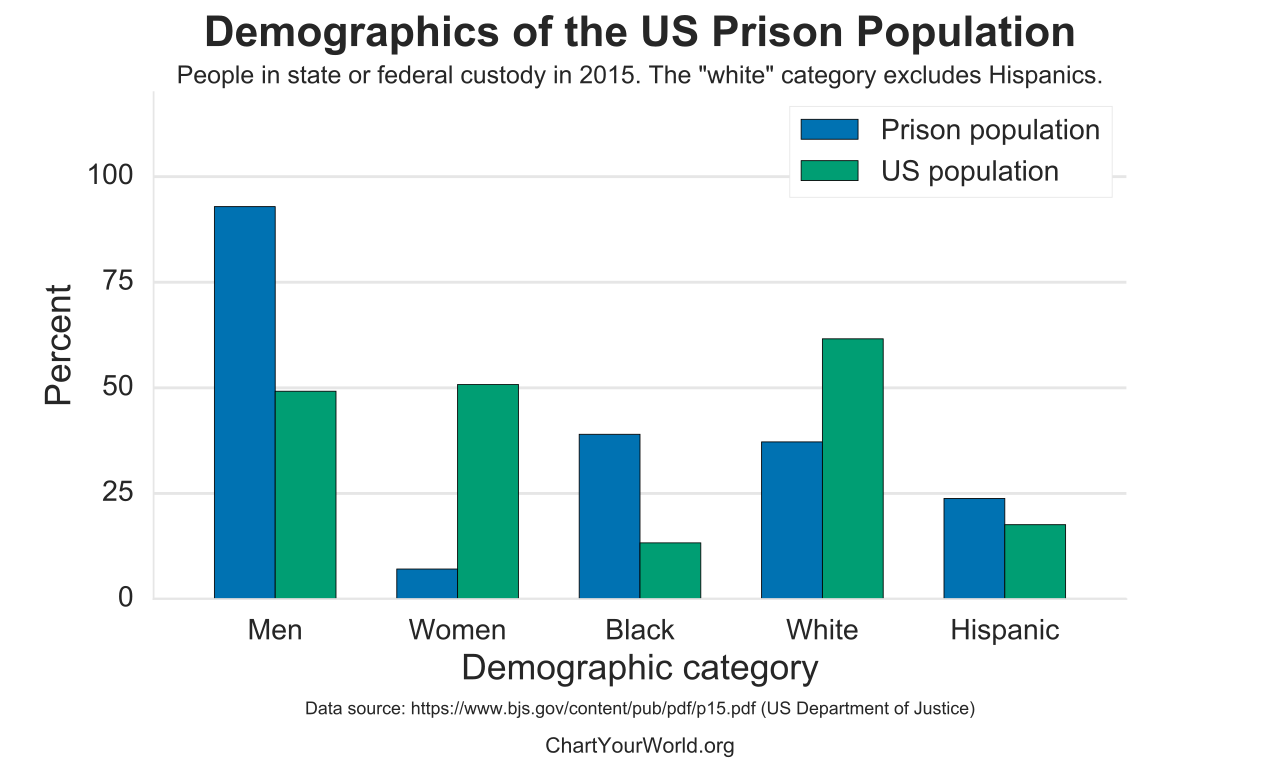Black women are disproportionately imprisoned and killed by police.
That’s it. Not sure why you’re fighting this.
Exactly...
And have been since the beginning of the prison system. Black men, Black woman and Black children -- have always been targeted, disproportionately imprisoned and killed by police and by White terrorism in general.
I hope BM and BW who do this challenge and bicker over who has it worse STOP. BW know BM are locked up more -- we know cause BM are our fathers, brothers, uncles, sons, cousins, etc.
It's an issue for US - not just BM or BW. Of course, they will always go after the men more -- but that doesn't stop them from going after BW and children too.
Following the abolition of slavery in 1865, the state prison system in United States underwent a major transformation and the convict lease system was established. The legacies of the overrepresentation, intense labor, and ill treatment of black women in the penal system are still evident in the system today. After the abolition of slavery, the number of incarcerated black women increased because the U.S. prison system developed to replicate and reinforce the gendered oppressions and social control specific to black women that had previously existed for slaves.
Adam Hirsch asserts, “the penitentiary arose in the age of slavery,” which illustrates that the presence of black people in the U.S. had an important role within the development of the prison system.6 Slaves were usually punished by their owners outside of the state justice system due to the inherent heteronomous nature of chattel slavery. In the lower South, before the abolition of slavery, virtually none of those imprisoned were slaves.
However, even after emancipation occurred, white Americans possessed a monopoly of social and political power over the black caste, a racially subjugated group. In order to control the black population, the state incarcerated an increasing number of black women following abolition. Hence, the rise of the penitentiary system occurred alongside changing attitudes towards crime and punishment, connected to changing social, economic and political conditions in society.
Once the Emancipation Proclamation came into effect, according to the U.S. Department of Justice, the number of prisoners rose from 60.7 per 100,000 in 1860 to 85.3 per 100,000 in 1870.9 The exponential increase in the number of prisoners suggests that the 13th Amendment allowed southern states to resolve their economic concerns regarding the abolition of slavery by establishing the convict lease system.
By 1880, a third of the black population in the South had been imprisoned - though how many of these prisoners were women is unclear.
Georgia and Alabama, though both in the South, had different attitudes towards black women’s labor. In 1908, Georgia implemented a domestic sphere within the carceral system that forced black women to work as domestic servants while serving parole. However, the extremely diverse laboring expectations of Georgia’s convict women contrasts the exclusively domestic vocational roles of Alabama’s female inmates.16 Despite the separation in labor expectations, the penal system in both Alabama and Georgia aligned with the racial and gendered beliefs of the time. Georgia treated black women from a racial perspective that assumed their blackness made them less than women, whereas Alabama’s gendered perspectives influenced the state’s treatment of female inmates.
Ultimately, the Southern “carceral regime [was] a key infrastructure that produced and reinforced racialized constructions of gender and gendered divisions of labor.”17 Black women faced a variety of oppressions due to the intersection of their gender and race within the Southern convict lease system. Gendered racial terror in the south was the genesis of women’s interactions with the criminal justice system.
The end of the Reconstruction era in 1877 to the beginning of the Great Depression in 1926 is also known as the “Lynching era”. An estimated 2,462 African Americans were killed and 79% of lynching crimes occurred in the southern states. It is clear that “Southern chivalry [drew] no line of sex” as African American women were also victims of lynching. 3% of victims were female and though this statistic is comparatively small, it highlights that the justice system did not protect black women from violence.
Read more here: https://scholarworks.arcadia.edu/cgi/viewcontent.cgi?article=1037&context=thecompass




